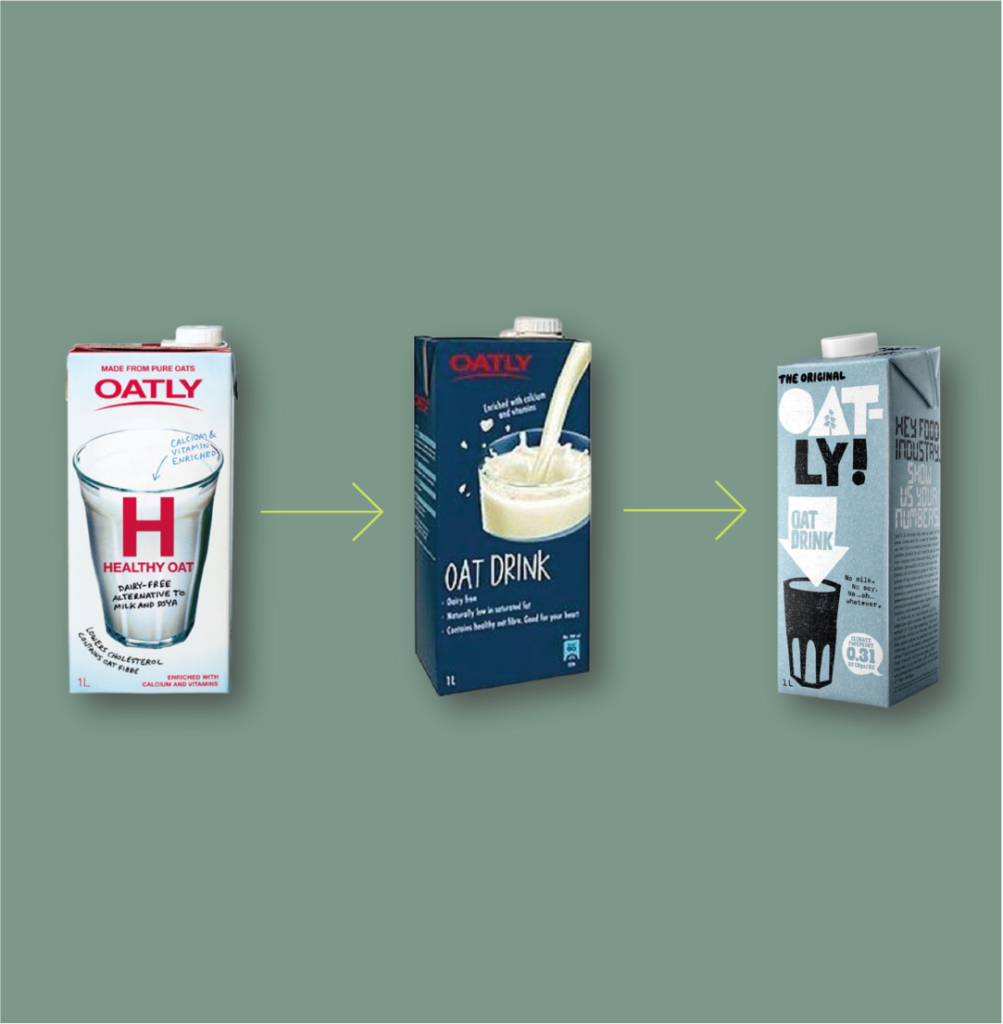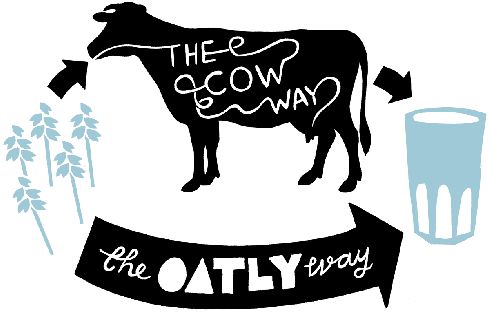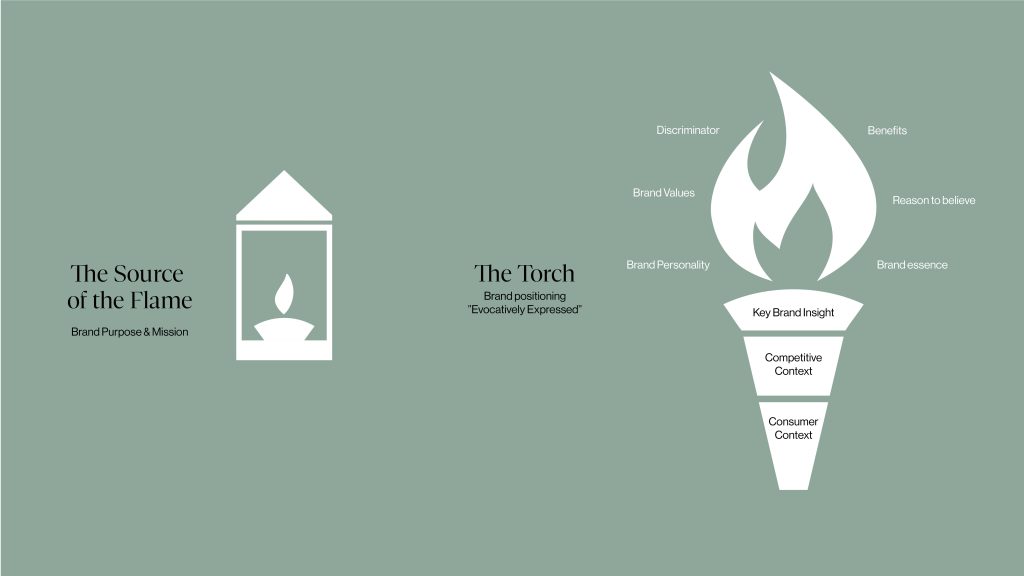Oatly’s repositioning story:
The 3 secrets behind the brand success

“We had world-class science, but we didn’t know how to tell the story that could unleash the potential we saw in the company.”
— Björn Öste, co-founder Oatly
In 2012 The HMT was hired by Oatly’s owner and board to lead their repositioning with the purpose to create a platform for international growth.
At the time, Oatly was an undifferentiated Swedish oat milk producer. Today a global brand.
When we look back at the project we can conclude that there are a number of fundamental factors that paved the way for the success we can see today. We summarised the learnings for you who want to create a global platform for growth for your company, whether you are a start-up entrepreneur or a CEO of a larger company looking for the next growth phase.
The challenges
The first is that change starts by not accepting the status quo, and these were the factors that triggered the need for the repositioning project:
#1: Oatly’s owners refused to accept a valuation as a food company – Oatly was rich in science-based IP related to oat and beta-glucans.
#2: The company had a weak brand that couldn’t command a premium price and could be at risk of being replaced by retail brands or replaced by a line extension into oats by a leading plant milk player like Alpro.
#3: Organisation behaving and thinking like a mass market company with focus on volume and price negotiations with retail.
#4: As a consequence, the acting CEO, who was competent and experienced in running a food company, was laid off as a way to open up for a change of mindset.
“The real challenge was that we started to behave like a generic brand and compete on price without being able to leverage our uniqueness”, says Björn Öste, Co-founder and co-owner of Oatly.


The health claim trap
Oatly at the time was very inward-focused. The understanding was that the “milk-free” position would remain a niche, especially since the dairy industry made advances with lactose-free milk.
The discussion circled how the company should leverage the science and claims related to Beta-glucans: heart or gut health? There were health claims available for both…
This mix of messages was also reflected on Oatly’s packaging at the time (see image), where “milk-free” was one message, “heart health” a second and “added vitamins and minerals” a third additional benefit for traditional vegetarians who needed calcium fortification to supplement their dairy-free diet. The brand didn’t give any direction to these three messages apart from its Oatly name. So who was the target consumer that could be the basis for Oatly’s future?
Early detection vegan trend
To understand who should be the future consumer of Oatly, we had to start by identifying their current target group. We already identified two groups: the milk-free benefits for those who couldn’t tolerate milk and those who chose Oatly as a vegan product.
It was clear that the emerging plant-based trend was in favour of Oatly and helped to grow sales and the popularity of oat milk as an alternative to the dominant soy milk. Market leader Alpro responded by including almond and oat milk to its product range, so how should Oatly win against soy and almond? The initial idea from Oatly was to leverage its oat nutrition and functional Beta-glucan claims. However, trend and consumer analysis made it clear that the plant-based trend was about both health and sustainability. By playing the health card only, Oatly would dig deeper into a small functional niche where the focus would be fighting between plant-based alternatives. It became clear at this stage that the sustainability trend resonated with the founder’s purpose and that his views were in line with a growing tribe of activist consumers, the so-called vegans.


Secret #1: Oatly’s founder
Building the brand on the purpose behind the science.
The founder’s purpose was to replace Cow’s milk, and in a simple drawing, he visualised the Oatly way vs the cow’s way and how much more energy and environmentally efficient it is to produce milk straight from the fields instead of taking the long route via cows and dairy. And what’s more, he could also demonstrate that the nutritional profile of oat milk was better suited for humans than cow’s milk whose nutrients are naturally designed to grow a calf. “Made for humans…”
With the founder’s purpose as the brand’s foundation, it became obvious that the main source of business was to take share from dairy, not other plant sources.
Secret #2: Oatly’s board
“We’re not in the business of oat milk; we’re in the business of change.”
To turn a purpose of change into a marketing strategy, it means you need alignment between the founder, board and management. The first step was to ensure that everyone understood that Oatly was not a functional food brand and not a mass market food brand but a lifestyle brand (we defined what the rules of a Lifestyle brand in the FourFactors® Academy) and as such, needed to bond with the early adopter consumers – in this case, the new generation of vegans.
The first rule of a Lifestyle Brand is to disrupt the category by challenging the status quo. In the case of Oatly, the owners and board stood the test when the dairy industry sued Oatly for its attack on cow’s milk. “Wow no Cow” & The Oatly Way vs the cow way. The internal alignment on the Brand Foundation enabled the brand’s very strong creative expressions, activities and uncompromising bonding with The No Milk Generation executed by Oatly’s new management.


Secret #3: Oatly’s management
Brand management starts with leadership.
Food company CEOs are not normally seen on pack, they are seen in factories and board rooms, but to create a disruptive brand you need a disruptive leader. The recruitment of Toni Peterson was based on a briefing where the recruitment agency was tasked to “not bring a traditional food company CEO” but a lifestyle brand leader. With Toni came his partner in crime, John Schoolcraft, as Creative director, who, together with Toni and the Swedish ad agency Forsman & Bodenfors, created the new brand execution based on the Brand Positioning Blueprint – “The Oatly Way” – we had developed together with owners and board. And since day one of the launch of the rebranded Oatly, Toni and John are the Oatly brand.
Our Methodology
The Brand Torch: how to define the position and the expression of a purpose-driven brand
The Brand Torch is the name of HMT’s proprietary brand definition model, where the torch represents the two parts of the Brand Positioning Blueprint: The robust handle as the solid position and the flame as the inspiring expression. Both are guarded by the board and given to the CEO, who shall carry the torch. But it is the source of the brand that makes the difference when you have a purpose-driven brand like Oatly. The source is where the values and ethics of the brand live, which makes it critical to anchor this in the corporation. In the case of Oatly, the source , i.e. the founder’s purpose, was anchored with the board. The brand source is what brings the fire to the torch and enables the very strong creative expressions and activities of the brand and the uncompromising bonding with The No Milk Generation that Oatly’s creative team has developed.
Are you curious to learn how to reposition your brand as successfully as Oatly?
